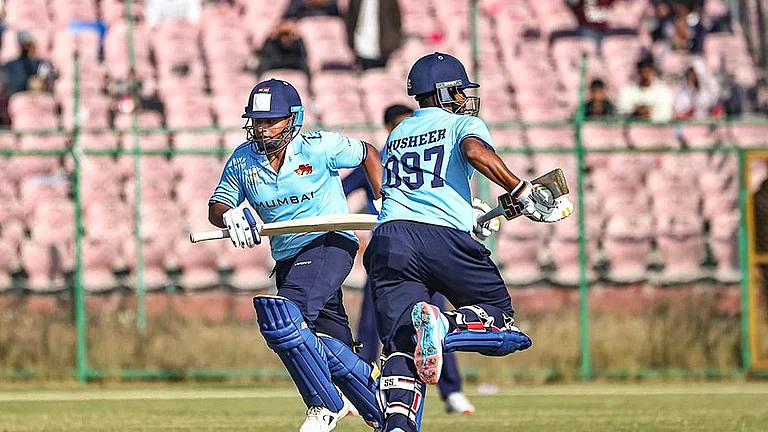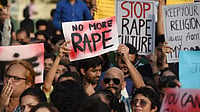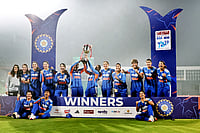In Rediscovering Gandhi, Yogesh Chadha seeks to rescue Gandhi from "the many myths that surround him" and "objectively" present his views. Yet the demythification of Gandhi is hardly new. From Judith Brown to Bhikhu Parekh and R.P. Dutt to Sumit Sarkar, there are numerous critical accounts of Gandhi. Chadha, as in Shyam Benegal's movie on the Mahatma, chooses to render Gandhi human largely through an examination of his relationship with his family. Towards this he cites Gandhi's own writings to good effect. Indeed, he has a secure ally in his protagonist, for none was more reflective about his thoughts and deeds than the Mahatma.
Chadha's account of Gandhi's initial years is the best part of the book. There are familiar tales of Gandhi's childhood and early political struggles. The author leads us through Thoreau, Emerson, Tolstoy, the Gita and Tulsi's Ramayana to provide the context for fundamental features of Gandhi's philosophy such as brahmacharya, ahimsa and satyagraha. The account reiterates Gandhi's well-known respect for all faiths; less known is the effort that he must have made to overcome his own racial prejudices. In this regard, Chadha does well to cite Gandhi's characterisation of a "Kaffir...whose sole ambition is to collect a certain number of cattle to buy a wife with and, then, pass his life in indolence and nakedness". Finally, there is Gandhi the man of religion who takes neither his religion nor of others for granted and instead seeks to master them in a unique way by eschewing historical veracity for their essence. It is a profound shift in modern Indian discourse on religion whose implication, unfortunately, the author fails to examine.
An eye for detail is the strong point of the book. But it cannot act as a substitute for philosophical rigour or for the 'clarity' that the author searches for but which eludes him. Chadha remains content with the obvious in his discussions of Gandhi's phi· losophy. To take just one instance, Chadha describes satyagraha as an innovation by Gandhi, gives the story of the coinage of the term and provides an example of how Gandhi made a distinction with its near synonym, passive resistance. Yet we have on Gandhi's own authority at least four other significant differences relating to love for the adversary, the absolute denial of arms, the possibility of offering satyagraha to those close to oneself and the absence of the idea of harassment, all of which could not be secured through passive resistance.
Similarly, there are important philosophical distinctions that Gandhi makes between satyagraha and non-cooperation, between satyagraha and duragraha and the limits of satyagraha. Chadha's book fails, however, to yield insight into any of these concepts.
Even more abject is the book's failure as a chronicle of India's freedom struggle and Gandhi's role in it. Chadha lays great stress on his accuracy, but errors of fact creep in nonetheless. Of the massacre at Chauri Chaura, Chadha says that the police taunted the non-cooperators and later fired at them though 'apparently' no one was killed. A recent monograph on the event by historian Shahid Amin records three deaths that were initiated by the crowd.
Facts apart, the author's selection of materials is lopsided and in allowing labels to serve for ideological positions, he does not aid our understanding. Swami Shraddhanand is cited no less than six times but we learn next to nothing about the significance of his activities. Reading Chadha one would hardly be aware that this man represented the reformist face of Hinduism to which Gandhi both felt drawn and yet from which he differed. Similarly, Ambedkar's significant differences with Gandhi are reduced to just a paragraph. Gandhi, it must be remembered, was an embattled Hindu, challenged both by the orthodox and reformist high castes and the excluded sections of the community. Only by placing his vision alongside or against these other discourses could he evolve his particular philosophy.
None have been left more unattended in the account under review than the 'people' of India. The transformation of Gandhi into a Mahatma was through them and because of them but they appear only on the margins of Gandhi's horizons as Chadha writes it. Obsessed with constitutional politics and confined to Gandhi's immediate circle, Chadha's account fails to grasp the making of the Mahatma in the numerous villages and remote qasbas of India. It seems that a full decade of rich scholarship on the interface between Gandhi and those whom he sought to represent has completely passed the author by.
Finally a word on Gandhi's assassination. The jacket describes it as the book's use and the author characteristically provides a wealth of information. Two observations stand out. The audience in the court that heard Godse's speech, especially women, was moved to tears. Notwithstanding, Godse was hanged, an act that Gandhi would have disapproved of. After reading about Gandhi's love for fellow humans over 500 pages, the second point is easily grasped. The 'tears' of the audience though require another level of appreciation. They require that we understand the cultural logic of India and Gandhi's profound challenge to its dominant versions. This book, quite clearly, is ill-equipped to lead us to such an understanding.
(The writer is working on a PhD on Gandhi.)


























